Tag: Church
Halloween.
Some images from churches in Suffolk.
My Ko-fi page.
My Redbubble shop.
https://www.redbubble.com/people/amanda150771/shop?asc=u
Thank-you.
St Peter’s Church, Moulton Suffolk.
A Sheela-na-Gig carving is on view in this church.
My Ko-fi account, to help me support my art and photography.
My Redbubble shop.
Halloween
Some atmospheric images from Suffolk Churches for Halloween.
Help support my art and photography on Ko-fi. Thank-you.
My Redbubble shop.
St Mary the Virgin, Depden, Suffolk.
St Andrew’s, Covehithe, Suffolk.
Support me on Ko-fi.
Thank-you.
St Mary Rickinghall, Suffolk.
St Mary, Rickinghall Superior, Suffolk.

There are two churches at Rickinghall the other also dedicated to St Mary, Rickinghall Inferior, is one of the round towered churches that are found across East Anglia. I have yet to visit that one, but will do when time allows.
The church is now redundant and if you wish to see the interior, you will need to get a key, information of where to do so is on the notice board. As my visit was on the spur of the moment, I only had a look around the outside. On a future visit I will plan ahead.
Despite it being near the busy Diss to Bury road, it’s very tranquil. I visited in June and the Churchyard was overgrown, not necessary a bad thing as the place was full of wildlife. I sometimes I think we can be a bit over the top with tidying up green spaces. Not only that but gravestones get damaged by constant mowing and strimming.






The Churchyard has monuments from the 18th, 19th and 20th centuries. It’s also has a First World War Commonwealth War Grave dedicated to Ernest Matthews who died in 1918.
The Commonwealth War Graves Commission have a database of war graves in the UK and elsewhere which can be found here.
https://www.cwgc.org/find-records/
The church itself consists of a 14th century chancel and a 15th century tower and east nave, all constructed of flint rubble with ashlar and red brick dressings. It was restored in 1868 by W.C. Fawcett. The nave has a black flint chequer board pattern and flint is used as decoration elsewhere on the church including on the buttresses.

The porch was added and altrered in the 15th century and has MR (Marian) and IHS (Jesus) flint flushwork monograms and decorative stone shields. There are two gargoyles on the the tower to the north and south. The top of the tower has an embattled parapet and more decorative flint work, monograms and blank shields.

There is a possible masons mark on one of the buttresses on the south-west corner of the tower. It is thought to represent a pair of compasses.
The windows have some nice tracery and I did notice a few very weathered carvings by two of the doors, two looked like heads.
A blocked archway, filled with brick, can be seen between the tower and the porch.

Two windows have fragments of 15th century and 18th century glass. Other windows are of 19th century date.
One commemorates Samuel Speare, a former altar boy, who at the age of 15, set out to become a missionary. In 1873, whilst working on the Island of Zanzibar, he became ill, returned home, and died at the age of 20.
As I was unable to view the interior I have posted some links which detail what can be seen.
The website, The Last of England, Churches of East Anglia, Suffolk, is a brilliant and very interesting resource if you are interested in Suffolk churches.
http://www.suffolkchurches.co.uk/rickingsuper.html
The Churches Conservation Trust site is another useful site.
https://www.visitchurches.org.uk/visit/church-listing/st-mary-rickinghall-superior.html#
Historic England has a very useful searchable database.
https://historicengland.org.uk/listing/the-list/list-entry/1241122

All photos are my own.

St Nicholas Church, Little Saxham, Suffolk.
A lovely little church with a round tower and interesting animal carvings.
St Andrews Church, Covehithe, Suffolk
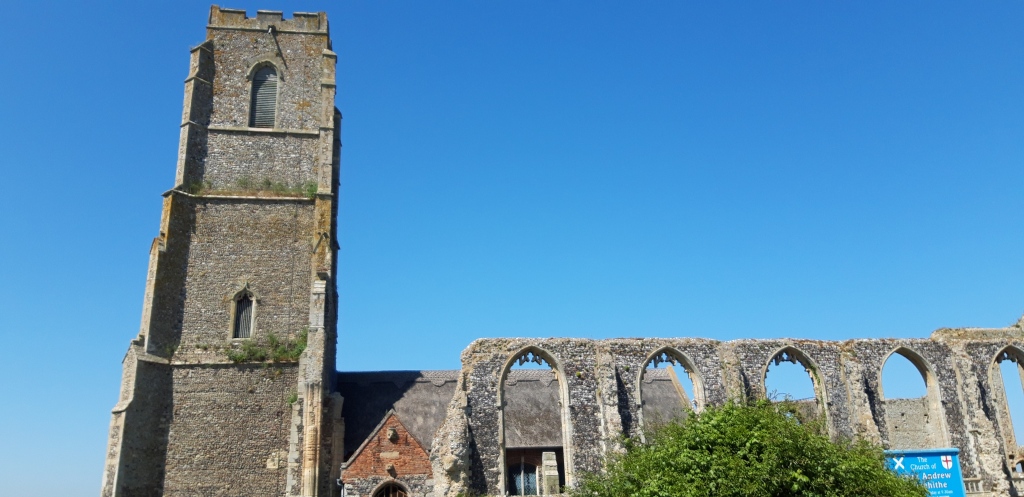
The church at Covehithe is a church within a church. The ruins and tower are mostly of 15th century date with earlier work being 14th century.
During the Civil War the stained glass of the church was destroyed by the iconoclast, William Dowsing.
Due to the financial burden this large church had on the small village of Covehithe in 1672 the old church was deroofed and a new smaller thatched church built against the older tower.


The tower was at one time an important landmark for sailors.
Unfortunately the church was closed when I visited so I was unable to view the interior.
I did notice 19th century graffiti scratched on the diamond shaped window panes. Graffiti going back hundreds of years can often be found in old churches.

The ruins are impressive, I visited on a sunny, hot day. The shadows cast by the ruined walls and arched windows made for a very atmospheric visit. There is some interesting flint work, something I’ve noticed at other Suffolk churches.
It’s well worth spending time wandering around the ruins and churchyard.

The churchyard was a bit overgrown in places, this is to encourage wildlife and a number of churches I’ve visited are doing the same.
St Andrew’s has it’s resident spirit. A female ghost with no face, is said to haunt the churchyard.

The tower and ruins are in the care of the Churches Conservation Trust.
https://www.visitchurches.org.uk/
Nearby is Covehithe Beach and Benacre National Nature Reserve which are well worth a visit.
https://www.thebeachguide.co.uk/south-east-england/suffolk/covehithe.htm

My GoFund me page.
My Ko-Fi page.
My Redbubbleshop.
https://www.redbubble.com/people/amanda150771/shop?asc=u
My Teepublic shop.







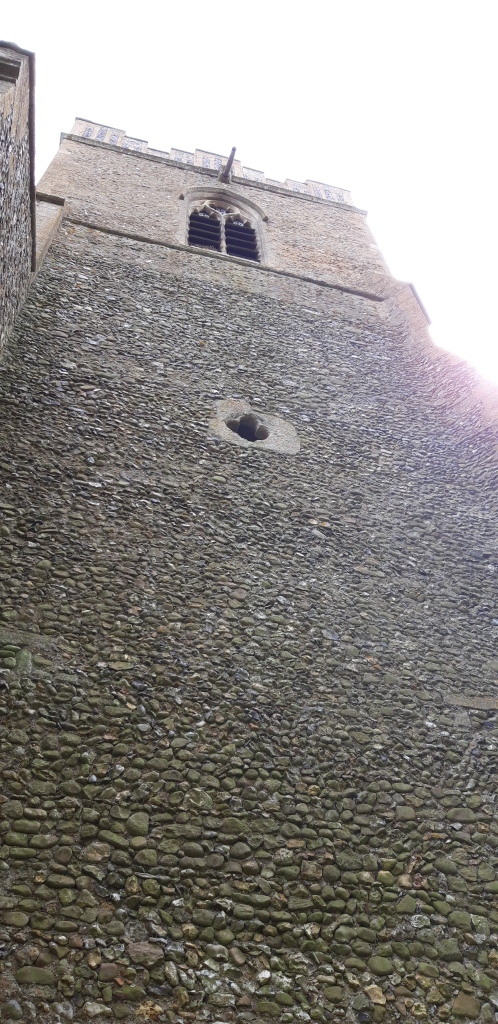

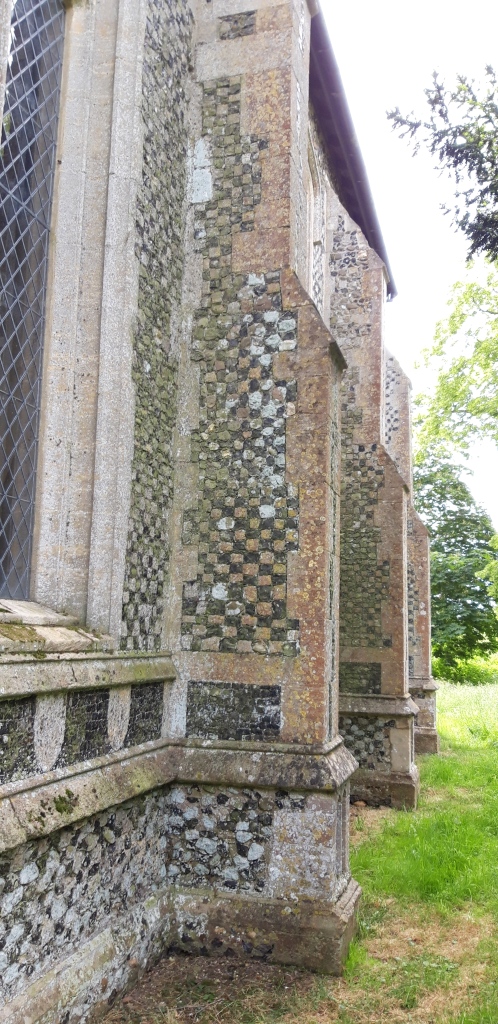

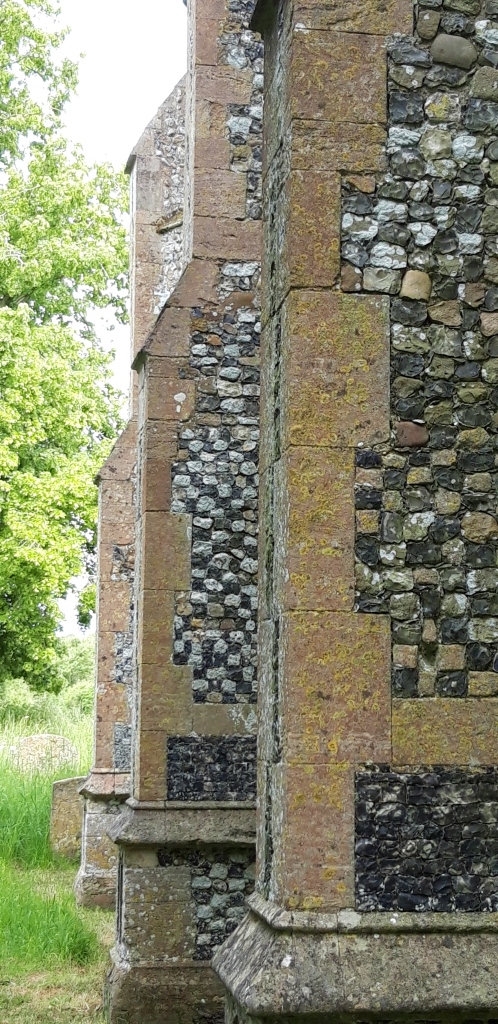





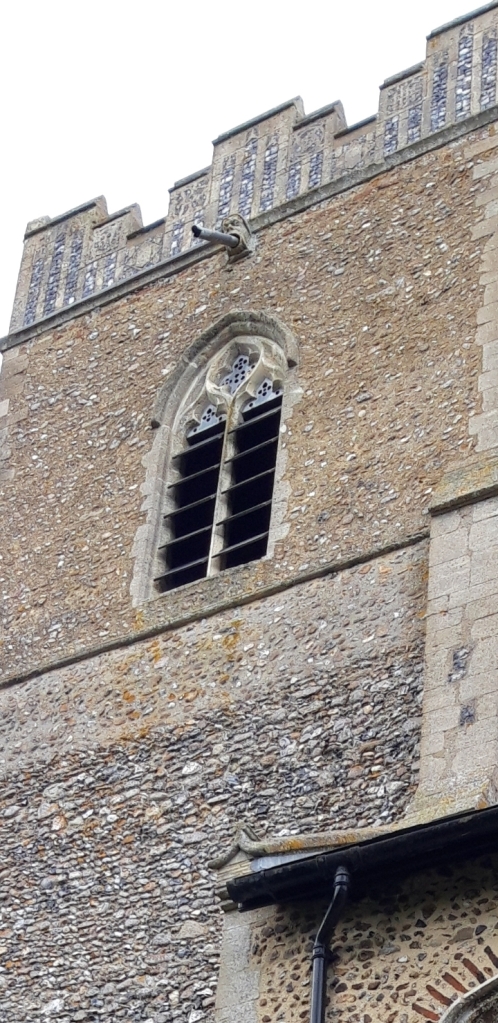







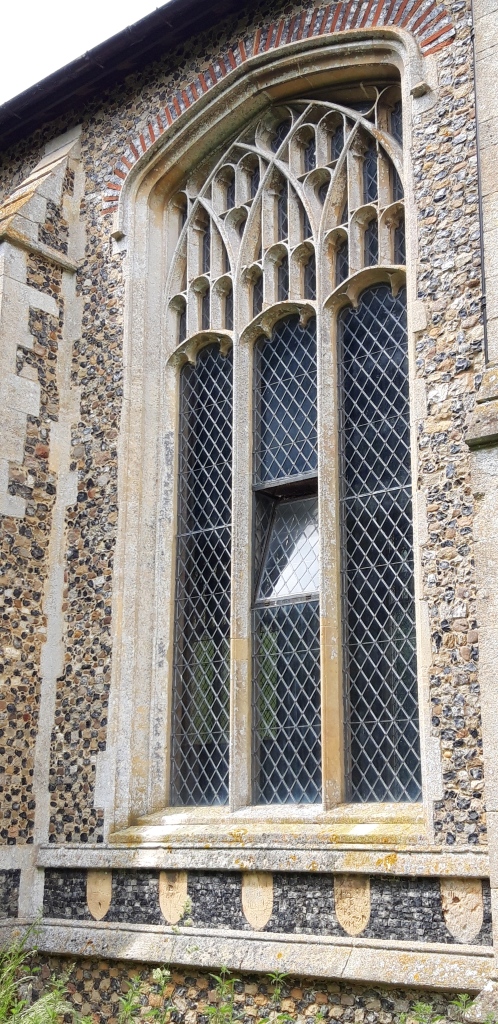





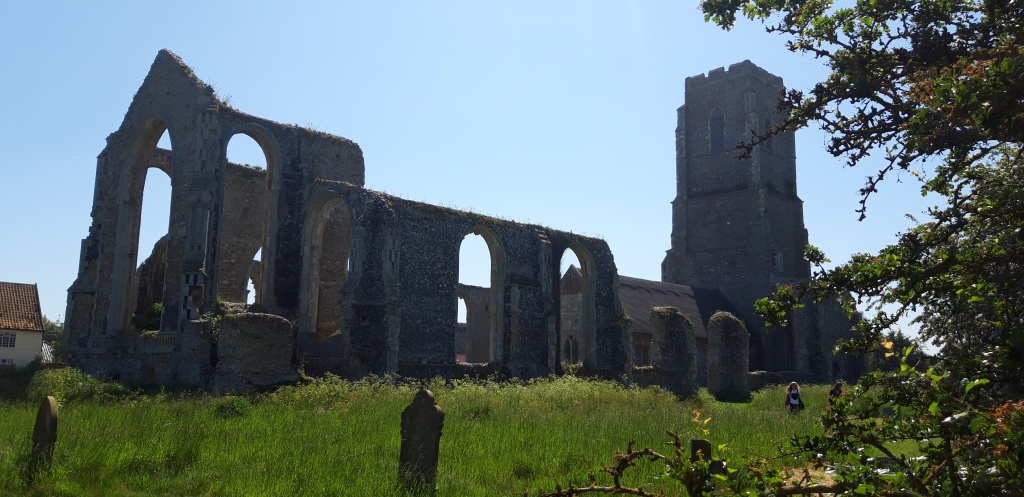

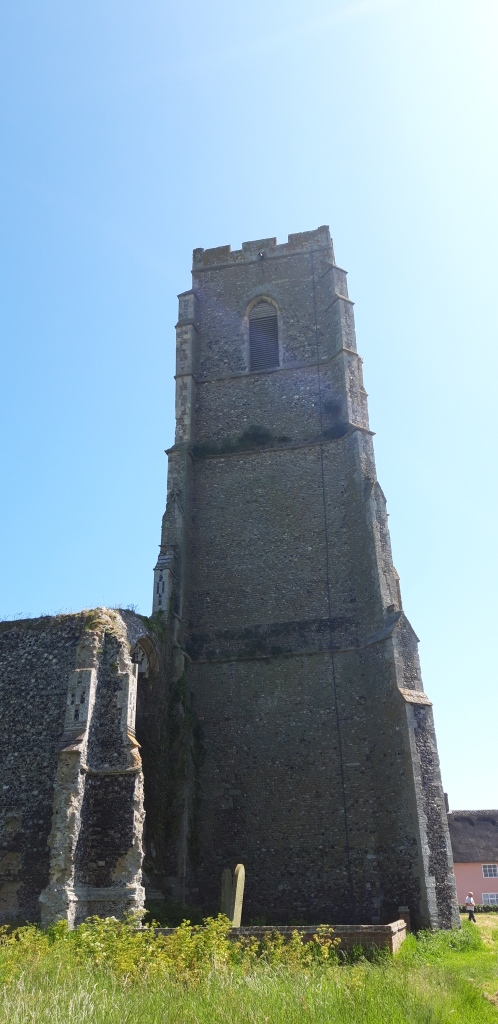
























You must be logged in to post a comment.